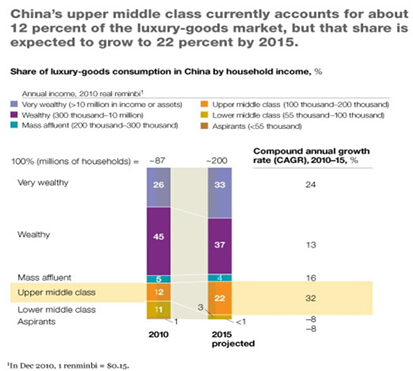��ϵ��ʽ
more��������Ӣ������
- 2017-09-22������ʵ�빫�ʵ���Ҫ��..
- 2017-08-17Ӣ��˶ʿproposal:�����ܼ�..
- 2017-08-14���������ҵ����ͳԤ�����..
- 2017-07-27��۱��ƿγ���ҵ��financi..
- 2017-05-24finance essay:ӡ�ȹ�ҵ��չ..
- 2017-04-12�Dz������|financial ..
- 2016-08-31ī�������Σ��������finan..
- 2016-08-15����ѧassignment����������..
- 2016-07-30�¹�˶ʿ��ҵ���ģ��¹�����..
- 2016-03-13ͨ���ݳ�Ʒ�������˽��й���..
more��������
- 2011-03-12��ѧ������Σ�����ģ�anato..
- 2010-05-29financial management
- 2014-03-11����Σ�����й��Ľ���������..
- 2014-09-09Ӣ��dissertation���ģ��ͻ�..
- 2010-12-12the macro-environmental a..
- 2011-01-30����Ү³��ѧ��ѧ�����ģ�a..
- 2010-06-25should hkma bear the larg..
- 2010-09-15Ӣ���������ķ���
- 2014-09-10���µ���������ҵ��
- 2014-09-09����������������
more��ѧ����д��ָ��
- 2024-03-31��ɭ•����˹С˵��..
- 2024-03-28��������Ů����������˼����..
- 2024-03-27����·�����ء�֯�����ϡ���..
- 2024-03-21��Խ���ӣ��ۡ����������ˡ�..
- 2024-03-19�����˱���•�Ѷ�����..
- 2024-03-13�������֮�á����ӿ�������..
- 2024-02-22��ѧ����ѧ�ӽ��µġ�ӡ��֮..
- 2023-05-03Ӣ�������ʶ���֮���ݴ�����..
- 2023-02-07Ŀ����������5g��the futur..
- 2022-07-04����Ӣ�����������ѧϰ�ߵ�..
ͨ���ݳ�Ʒ�������˽��й��IJ���״�� [2]
�������ߣ�www.51lunwen.org�������ԣ���ҵ Assignment�dz�ʱ�䣺2016-03-13�༭��cinq����ʣ�9338
����������2680���ı�ţ�org201603121908328448���֣�Ӣ�� English���������ô��۸��������
ժҪ�����о�����ͨ��ʹ�ø�����Ϣ���ش����������⣬ʲô���ݳ�Ʒ�ã�Ϊʲô�ݳ�Ʒ���й��кܴ���г���Ϊʲô�ݳ�Ʒ���۲���ͨ������Ӱ�졣
B. Well-known brands of luxury goods
According to Okonkwo, a luxury brand or reputation brand is a brand for which the major part of its commodities are luxury goods.It may also involve inevitable brands whose names are linked with luxury, high price, or high quality, though few, if any, of their goods are usually considered as luxury goods.
For example, in the 1970s and 1980s, coming a recently weakening attack to widely license their brand , the Gucci label is mainly sold in directly-owned shops now. The Burberry label is usually considered to have powerless its label logo in the United Kingdom in the precocious 2000s by over-licensing its label, therefore,whose products were full of only by the essence,diminishing its marks as a brand .
With more than fifty brands,the largest luxury good generator in the world is LVMH (Louis Vuitton Moet Hennessy) , contain Louis Vuitton which with the world's primarily brand logo. In 2003, the LVMH group earn a revenue which is up to �2 billions on sales of �12 billons. Other market leaders involve PPR (after it purchased the Gucci Group) and Richemont.
A tiny group in parabole, the wealthy trend which greatly predominant. One time a label acquires an 'endorsement' from the members of the team, after that, the brand can be assured as a authentic 'luxury' label. With 'entry-level' automobile traded to young people,decreased rich customers,and increased spending examples for the older people and more rich clients, one of the sample of unusual product lines in the identical label is found in the self-acting manufacturing.
1. Which region can they earn the largest profits
'China will account for about 20 percent, or 180 billions renminbi ($27 billions)At the December 2010 exchange rate), of global luxury sales in 2015�� , what is said above is depend on new McKinsey research. Actually, in 2009, in time of the global decline, quantity of selling of luxury items in the mainland increased by 16 percent, to around 64 billion RMB �� dip from the 20% increase of preceding years, however, much better than the property of many other crucial luxury exchanges. To find a better think of the dynamics, McKinsey surveyed over 1,500 wealthy clients in seventeen Chinese cities in spring February 2nd 2010. The complete report on the McKinsey Insights China Web site which comprehending China��s Growing Rate for Buying Luxury is effective . Three detection stood out.' Yuval Atsmon, Vinay Dixit, and Cathy Wu said. Vinay Dixit leads McKinsey��s Insights China and Yuval Atsmon is a principal and Cathy Wu is a adviser in McKinsey��s Shanghai office.
Figure. 2 Share of luxury-goods consumption by household income in China, %
This graph shows that the percentage of very wealthy will significantly increase from 26% to 33% between 2010 and 2015 projected. The percentage of upper middle class will sharply rise 10% which from 12% to 22% between 2010 and 2015 projected. However, the percentage of mass affluent will almost remain the same from 2010 to 2015 projected respectively in 5% and 4%.The proportion of wealthy will fall 8% cause by increasing percentage of very wealthy. The proportion of lower middle class and aspirants will also observably dip because of the rise of the perce��������Ӣ���������ṩ�������ṩ���Ĵ�д��Ӣ�����Ĵ�д����д��������дӢ����������д��ѧ����������дӢ����������ѧ�����Ĵ�д��غ��Ĺؼ���������

 Ӣ��
Ӣ�� �Ĵ�����
�Ĵ����� ����
���� ���ô�
���ô� ������
������ �¼���
�¼��� ���
��� �ձ�
�ձ� ����
���� ����
���� �¹�
�¹� ������
������ ��ʿ
��ʿ ����
���� ����˹
����˹ ������
������ ��������
�������� �Ϸ�
�Ϸ�






